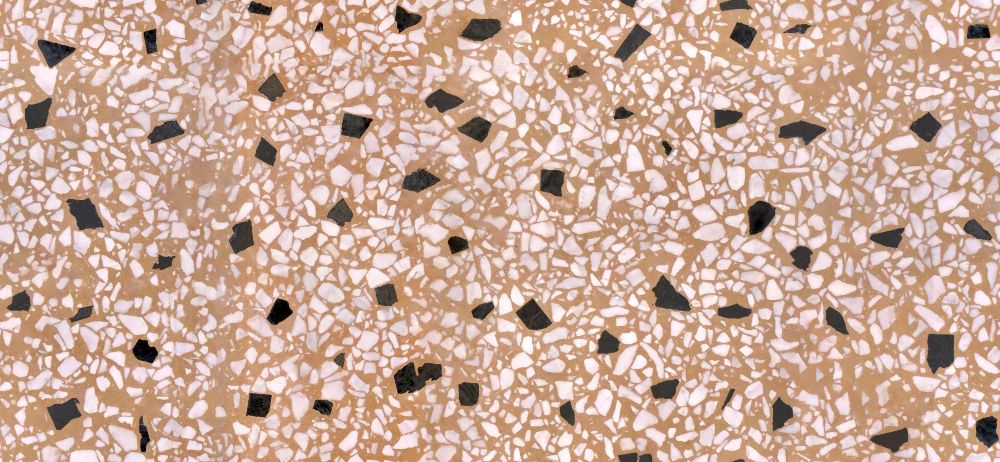Terrazzo Artico
Category
Terrazzo
Download
Edit
Terrazzo is a hard-wearing composite floor and wall finish material comprised of small fragments of stone, traditionally granite, marble or quartz, but extending to other fine or recycled aggregates including concrete, glass, metals and porcelain. Terrazzo can be created using cementitious or polymeric (epoxy-resin) binders, with metal strips used as separators between patterns, textures or colours, acting as movement joints to prevent cracking. Cementitious bonded terrazzo is laid in 3 stages, with a smooth, level concrete foundation below a finer grain, sandy concrete which provides a smooth surface on which to lay the chunks of stone. Once poured, more stone fragments can be added prior to setting to add complexity and a sea-like sparkle. Once set, it is usually ground and polished for a uniform appearance.
Sharing its history with Ancient Egyptian mosaics, Terrazzo was deployed extensively in Renaissance Italy. Contemporary terrazzo is most commonly associated with the Venetian Pavement (pavimento alla Veneziana) where techniques for manufacturing and layering the materials were developed in the 18th century. Durable and highly resistant to water ingress when laid properly, marble chips were arranged on a mortar base. Techniques utilised for crafting Seminato, a rougher, less organised looking variant of Terrazzo whereby larger stone fragments were laid at random and then polished when set, are combined with Venetian Pavement construction techniques to form the basis of modern Terrazzo fabrication. Terrazzo was a popular decorative feature in Art Deco architecture, while it remained popular in more restrained textures and tones throughout the Modernism movement, when mechanisation of the production process increased its popularity and use while reducing construction costs of hand-laying and finishing the surfaces. It is known for its high quality, marble-affect appearance.
A seamless terrazzo texture with a terrazzo artico surface. Seamless textures can be tiled repeatedly across a surface without visible seams making them useful for architectural drawings and 3D models. This image can be used as a SketchUp texture, Revit material or imported into Photoshop for use in 2D illustrations. A high resolution version of this texture is available, as well as CAD hatches and PBR maps with Architextures Pro.

